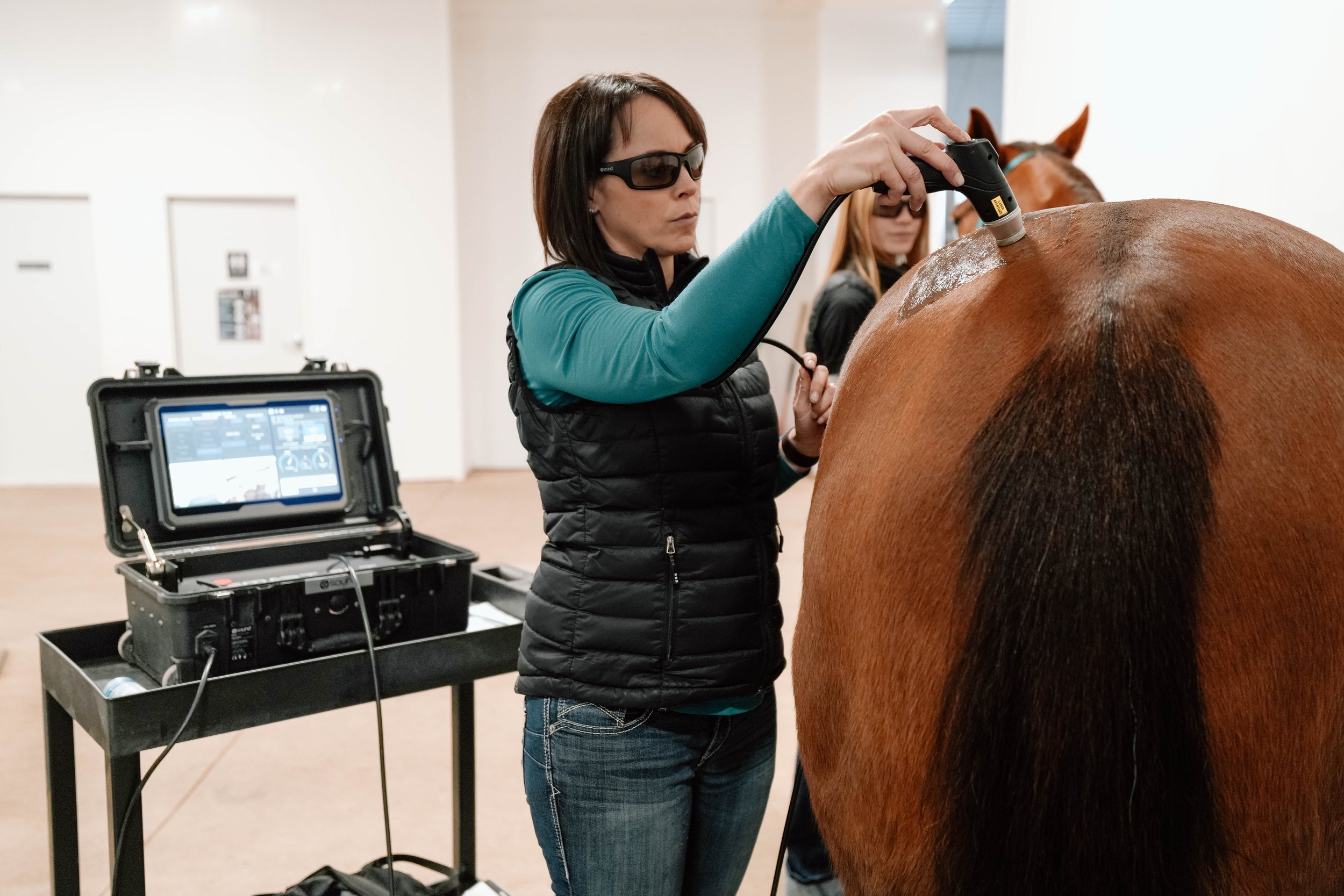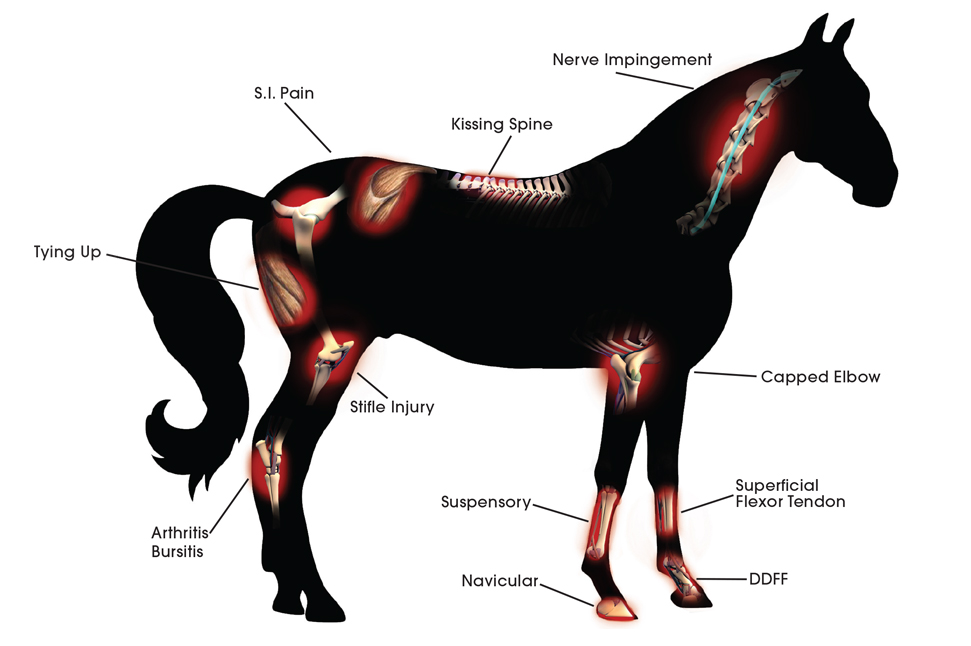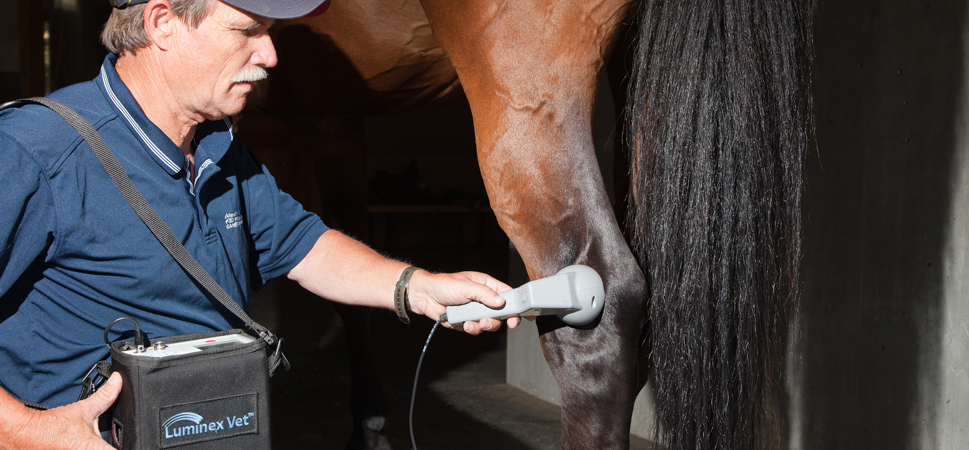Just How Laser Treatment in Equine Treatment Is Revolutionizing Vet Take Care Of Horses
Laser treatment has actually emerged as a transformative approach in equine veterinary care, giving a non-invasive option that speeds up recovery and boosts total health and wellness. Leveraging exact light wavelengths, this advanced treatment boosts cellular regrowth, decreases swelling, and reduces discomfort. Its effectiveness extends from musculoskeletal injuries to chronic disorders like osteo arthritis, dramatically improving wheelchair and life top quality for steeds. The mobility and convenience of laser treatment tools further highlight their growing indispensability amongst vets. As we discover the detailed technicians and real-world successes, the extensive effect on equine medical practices becomes progressively obvious.

Comprehending Laser Therapy
Recognizing laser therapy is vital for appreciating its role in equine therapy. Laser therapy, also called photobiomodulation, includes the application of particular wavelengths of light to cells, which can cause different biological results. This restorative modality uses the power of light power to permeate the skin and underlying cells, stimulating mobile procedures and improving tissue repair work.
The innovation behind laser therapy is based in the concept of photochemistry, where photons are taken in by chromophores within cells, bring about boosted ATP production and inflection of reactive oxygen species. This, consequently, promotes mobile proliferation, lowers inflammation, and accelerates recovery. Veterinary experts use different types of lasers, consisting of low-level lasers (LLLT) and high-power Course IV lasers, depending on the details healing objectives and the nature of the equine problem being treated.
Various laser wavelengths and power settings are meticulously selected to target numerous tissue midsts and accomplish desired professional results. Safety methods are vital, as inappropriate use can result in thermal damages or suboptimal healing impacts. Hence, a comprehensive understanding of laser therapy's devices and applications is vital for its reliable implementation in equine veterinary method.
Advantages for Horse Health
The myriad benefits of laser therapy for equine health and wellness incorporate enhanced healing, pain decrease, and boosted mobility. This sophisticated therapy technique leverages details wavelengths of light to pass through tissues, stimulating cellular function and promoting fast tissue repair service. The non-invasive nature of laser treatment makes sure minimal stress and anxiety and pain for the horse, helping with a smoother healing process.

Improved flexibility is one more important benefit, particularly for efficiency and working steeds. By minimizing inflammation and discomfort, and improving tissue fixing, laser therapy aids in bring back joint function and muscular tissue versatility. The cumulative result of these advantages is not only a quicker return to regular activity but likewise an overall improvement in the equine's lifestyle. Thus, laser treatment stands as a transformative device in modern-day equine vet care.
Common Problems Dealt With
Laser treatment has actually arised as a versatile treatment alternative for a variety of common equine problems. In addition, laser therapy is effective for conditions like osteoarthritis, where it assists mitigate joint inflammation and promote tissue repair work.
Wound monitoring is an additional location where laser treatment has actually revealed substantial promise. Chronic wounds or slow-healing abscess can be specifically tough in horses, but laser therapy enhances Visit Your URL cellular regeneration and improves blood circulation, thus accelerating the recovery procedure. Laser therapies have actually been successfully employed in managing hoof conditions such as laminitis and abscesses, minimizing pain and advertising quicker healing.
Equine athletes often struggle with performance-related concerns like muscular tissue soreness and stress and anxiety fractures. Laser therapy help in lowering muscle mass fatigue and expedites the recuperation of micro-injuries, therefore ensuring that steeds return to come to a head efficiency faster. By attending to these diverse problems, laser therapy is changing the landscape of veterinary treatment, offering a non-invasive, reliable option to traditional therapies.
Technology Behind Laser Treatment

Laser gadgets made use of in vet medicine commonly make use of low-level laser therapy (LLLT) or chilly laser treatment. Unlike high-powered medical lasers, these devices operate at reduced power levels, enhancing healing advantages while lessening thermal damages. The energy from the laser light promotes adenosine triphosphate (ATP) manufacturing, boosts cellular metabolism, and speeds up cells fixing processes.
Modern laser treatment devices for equine therapy is developed with adjustable setups to provide to the details demands of different cells and problems. Furthermore, improvements in laser technology have actually led to the advancement of portable, handheld tools, making it much easier for veterinarians to provide therapy in a range of settings, from facilities to stables.
Success Stories and Study
Showcasing the substantial advantages of laser therapy, numerous success tales and study illuminate its transformative influence on equine health and wellness. One such case entails a pedigreed racehorse struggling with chronic tendonitis. Traditional therapies yielded very little improvement, yet after integrating laser treatment into the routine, the equine showed considerable decreases in inflammation and discomfort within weeks, eventually returning to competitive auto racing.
An additional compelling example includes a dressage steed identified with serious back discomfort, restricting its performance. A veterinary team utilized low-level laser treatment (LLLT) to target the inflamed areas, leading to significant renovation in flexibility and a significant decrease in discomfort. Over a number of sessions, the steed regained its peak form, showcasing the effectiveness of laser treatment in resolving bone and joint issues.
Additionally, a research study carried out at a leading equine facility examined 50 horses with various soft tissue injuries treated with laser therapy. The results were striking: 85% of the equines showed sped up recovery times and boosted movement. These situations highlight the adaptability and efficiency of laser treatment in equine medication, using a non-invasive, scientifically-backed technique to boosting recovery and performance in horses.
Final Thought
Laser therapy is transforming equine veterinary care link by supplying a non-invasive therapy that More Help increases recovery, reduces inflammation, and eases discomfort. With its performance in treating a series of conditions, from musculoskeletal injuries to persistent disorders like osteoarthritis, this innovation substantially boosts equine health and mobility. The portability and adaptability of laser therapy even more emphasize its transformative effect on veterinary practices, strengthening its duty as a necessary tool in contemporary equine healthcare.